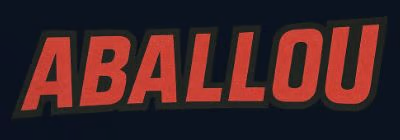Injury Update and Timeline
Barcelona officially announced details of Ferran Torres injury, which had sparked fans concern after his recent withdrawal from the Spanish national team camp, confirming it is a mild muscle fatigue and that he will not be out for long.
According to the Spanish newspaper Sport, the Spanish Football Federation stated in an official release that Torres would be left out of the national team camp due to some muscular discomfort, and he returned directly to Barcelona for the necessary medical tests.
The federation's statement clarified that Torres suffers from muscular fatigue in the left hamstring, with no associated structural injury, a diagnosis Barça later confirmed after thorough tests on Monday morning, noting that there is no real injury.
In Barcelona's own release, it was stated that the medical examinations confirmed fatigue in the left hamstring with no accompanying injury. The club added that Torres is not in withdrawal and will follow a specialized treatment plan in the coming days.
Sport also indicated that Torres's condition is not a cause for alarm, with expectations that he will regain full readiness within a few days and be available for the October 18 match against Girona at the Estadi Olimpico Lluís Companys.
Torres Role and Evolution in Barca
Over time, Ferran Torres proved to be one of the standout beneficiaries of Hans Flick's era at Barcelona, evolving from a winger with limited playing time to a center forward who fights to hold his place with growing confidence.
While doubts about his ability to play as the central striker under Xavi Hernandez persisted, the German coach helped him rediscover the role and gave him the place he long sought in the front line.
Flick saw Torres as an ideal partner to lead Barcelona's attack alongside the veteran Robert Lewandowski, and after a big win over Valencia in September he commented that it was great to have options at that position, with players of high quality.
Until the international break in October, Torres started eight matches and came on as a substitute in only two, confirming that he has become a real attacking weapon in the new coach's system.
From Valencia to Barcelona Path of Maturation
Torres's journey with the center forward role did not begin at Barcelona. It traces back to his Valencia days, where coach Marcelino gave him his first look before Albert Celades experimented with him as a true striker.
Celades later explained that Torres was placed in the central role several times despite limited prior experience there, mainly because the team faced injuries and needed him to adapt thanks to his technical skill and intelligent movements in the deeper zones.
He was strong in aerial duels and possessed a natural sense for scoring that came with ease.
The next stage of his development came at Manchester City, where Torres confronted a fresh test under Pep Guardiola after Sergio Aguero's long term injury disrupted the squad.
One member of the staff recalled that Torres arrived at City because Aguero was out for most of the season, and the team needed a striker. He has a strong goalscoring sense, moves effectively in the final third, and can drop into space to help the attack.
The staff added that intensive training helped him master the required movements as a forward: dropping to receive the ball, making late runs behind the defense, and finishing chances. It was not his natural position at the time, but his adaptability impressed the coaches.
When Torres joined Barcelona, he was seen as a promising piece of Xavi's project. He was described as a world-class player who understands spaces well and does not lose possession easily.
Nevertheless, he did not secure a steady run as the central striker due to competition from Aubameyang, Luuk de Jong, Memphis Depay, and later Lewandowski.
A staff member explained that the coaching staff did not give him the continuous run he sought, but he contributed a lot with high-pressing and relentless effort to win back the ball, which the team valued.
In attack, he moved cleverly in the spaces, but the staff felt that the team occasionally lacked the final pass to convert his intelligent movements. As a result, Xavi often used him on the wings where his shooting ability could be best utilized.
This season, with Lewandowski’s form and fitness aging, Torres has emerged as Barcelona's present and future striker. The player developed under Guardiola and trusted by Xavi found the right environment under Flick to prove he can be more than a winger and a reliable center forward who can lead the frontline with confidence.
Punchlines: If injuries were a target, Ferran would need a bigger arsenal—a sniper rifle with a training manual in hand would come in handy.
Punchline 2: Watching Torres's career is like buffering in real time—hang tight, and a decisive goal might just pop up out of nowhere.




